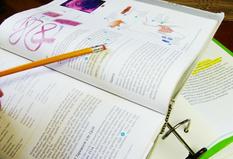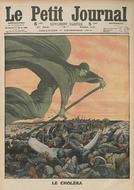 | ||||
History of Microbiology
Review Questions
Virtual Microbiology Classroom of Science Prof Online
History of Microbiology Review Questions
 | ||||
History of Microbiology
Practice Test Questions
These multiple choice and true/false questions are designed to help students practice and test their understanding of this topic.
SPO VIRTUAL CLASSROOMS
 | ||||||
They are based on materials that can be found on the History of Microbiology Lecture Main Page.
1. Explain the contribution and its significance for the following early microbiologists.
a. Needham & Spallanzani
b. Redi
c. Leeuwenhoek
d. Tyndall
e. Pasteur
f. Nightingale
g. Snow
h. Lister
i. Domagk
j. Fleming
k. Jenner
l. Holmes & Semmelweis
2. Why was the persistence of the theory of spontaneous generation detrimental to the development of the field of microbiology?
3. Defend the statement "The investigations of Anthony van Leeuwenhoek
changed the world forever."
4. Specifically how did Spallanzani's experiments differ from Needham's and why was this difference so critical in discrediting the idea of spontaneous generation?
5. What important difference existed between the flasks used by Pasteur & Spallanzani? How did Pasteur's investigation settle the debate over spontaneous generation?
These are review questions from the Virtual Microbiology Classroom, designed to help students better understand the history of microbiology.
Page last updated:
2/2016
You have free access to a large collection of materials used in a college-level introductory microbiology course. The Virtual Microbiology Classroom provides a wide range of free educational resources including PowerPoint Lectures, Study Guides, Review Questions and Practice Test Questions.
6. Why is hand washing so important in the prevention of infectious diseases?
7. Of what importance are endospores in determining conditions necessary for sterilization?
9. What is a vaccine, and, in general, how do vaccines work to prevent a person from becoming ill with an infectious disease?
10. What is Germ Theory and why was it's development important in our understanding of infectious disease (See articles Early Germ Theory & Late Germ Theory for additional information.)




